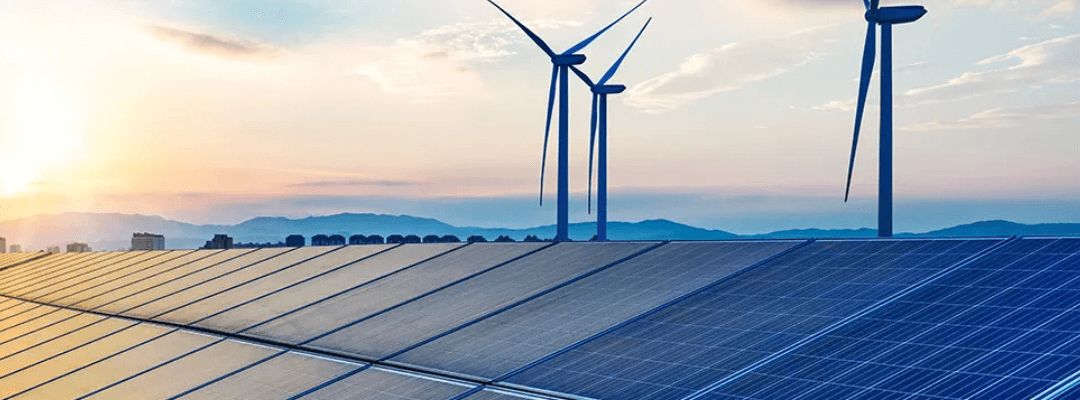When considering a solar power farm loan from a bank versus a Non-Banking Financial Company (NBFC) in India, there are several differences in terms of eligibility, interest rates, processing time, and flexibility. These loans are typically taken to set up large-scale solar farms or solar power projects. Both banks and NBFCs have their own advantages depending on the borrower’s financial profile, urgency, and specific project requirements.
Here is a detailed comparison of solar power farm loans from banks vs NBFCs:
1. Eligibility Criteria
- Banks:
- Banks have stricter eligibility criteria for solar power farm loans. They prefer to lend to established companies, large corporations, or businesses with a strong credit profile. The borrower’s financial stability, creditworthiness, and experience in the renewable energy sector are closely scrutinized.
- Banks require detailed project reports, financial statements, and technical feasibility studies before approving the loan.
- NBFCs:
- NBFCs tend to have more relaxed eligibility criteria. They are more likely to approve loans for small or medium enterprises (SMEs), startups, or businesses that may not meet the stringent requirements of banks.
- NBFCs may offer loans even if the borrower has a lower credit score or a shorter business history, provided the solar project shows strong revenue potential.
2. Interest Rates
- Banks:
- Banks typically offer lower interest rates on solar power farm loans, thanks to their access to cheaper sources of funds. Interest rates from banks generally range from 8-12% per annum, depending on the borrower’s financial profile and the size of the solar project.
- Banks may offer both fixed and floating interest rates.
- NBFCs:
- NBFCs usually charge higher interest rates compared to banks, typically ranging from 10-16% per annum. This is due to NBFCs’ greater willingness to lend to borrowers with lower credit scores or riskier solar power projects.
- NBFCs offer more flexibility in interest rate negotiations but generally have slightly higher rates to compensate for the risk they take on.
3. Loan Processing Time
- Banks:
- Banks tend to take longer to process solar power farm loans because they have to perform extensive due diligence, technical evaluations, and financial feasibility assessments. The processing time for solar farm loans from banks can range from 4 to 8 weeks or more, depending on the complexity of the project and the borrower’s profile.
- NBFCs:
- NBFCs are known for faster loan processing times. They usually approve and disburse loans within 2 to 4 weeks, making them a better option for borrowers who need quick access to funds.
- NBFCs streamline their evaluation processes, making them more responsive to urgent solar project financing needs.
4. Loan Amount
- Banks:
- Banks generally provide higher loan amounts, especially for large-scale solar power farm projects. Loan amounts from banks can range from ₹50 lakh to ₹100 crore or more, depending on the size and scope of the project, borrower’s eligibility, and collateral offered.
- Banks typically offer up to 70-80% of the total project cost as a loan, depending on the borrower’s financial profile and the value of the collateral.
- NBFCs:
- NBFCs also offer competitive loan amounts, though they may cap the maximum amount lower than banks for riskier borrowers or smaller solar projects. Loan amounts typically range from ₹10 lakh to ₹50 crore, depending on the project’s viability and borrower’s creditworthiness.
- NBFCs are often more flexible in terms of the Loan-to-Value (LTV) ratio, which can go up to 80-90% of the project cost.
5. Repayment Tenure
- Banks:
- Banks offer longer repayment tenures, typically ranging from 10 to 15 years, and in some cases up to 20 years. Longer tenures allow solar farm developers to spread out their EMIs over time, making the repayment more manageable.
- NBFCs:
- NBFCs generally provide slightly shorter repayment tenures, usually between 5 to 10 years, though some NBFCs may offer longer tenures for high-value projects. However, they are more flexible in structuring repayment schedules, offering customized EMIs based on the borrower’s cash flow and project revenues.
6. Documentation
- Banks:
- Banks require extensive documentation, including detailed project reports, business financials, profit and loss statements, cash flow projections, tax filings, and environmental clearance certificates. They also require collateral documentation and detailed technical feasibility studies for the solar project.
- NBFCs:
- NBFCs tend to have simplified documentation requirements compared to banks. While they still require basic project reports and financial documents, they are more lenient in terms of the paperwork needed for approval. This leads to faster loan approvals and less hassle for the borrower.
7. Collateral
- Banks:
- Banks typically require high-value collateral for solar power farm loans. This could include the solar farm itself, land, or other immovable assets. The collateral acts as security for the loan, and banks usually provide loans based on 60-80% of the collateral’s market value.
- NBFCs:
- NBFCs are more flexible in terms of the types of collateral they accept. While they still require collateral (such as land or the solar farm), they may also consider future cash flows from power purchase agreements (PPAs) or other receivables as collateral. NBFCs may offer a higher loan-to-value (LTV) ratio, sometimes up to 90% of the collateral’s value.
8. Flexibility
- Banks:
- Banks tend to be less flexible in structuring the loan terms, interest rates, and repayment schedules. They follow a more standardized process, with little room for negotiation, especially for borrowers without a long-standing relationship with the bank.
- NBFCs:
- NBFCs are known for their flexibility in structuring loans, offering customized repayment schedules, flexible EMIs, and tailored interest rates based on the project’s cash flow. This makes NBFCs more attractive for borrowers who need personalized loan solutions.
9. Loan Disbursement
- Banks:
- Banks usually follow a structured disbursement process, where the loan is disbursed in stages based on the progress of the solar farm project. The loan is released after each stage is completed and verified by the bank.
- NBFCs:
- NBFCs are generally more flexible in their disbursement process, and they may release larger portions of the loan upfront or in fewer stages, making them better suited for borrowers who need quick access to funds for construction or equipment purchases.
10. Credit Score Requirements
- Banks:
- Banks typically require a higher credit score, usually above 700, for approving solar power farm loans. Borrowers with strong credit scores can access better loan terms and lower interest rates.
- NBFCs:
- NBFCs are more lenient with credit scores and may approve loans for businesses or individuals with credit scores as low as 600. However, borrowers with lower credit scores may face higher interest rates.
11. Prepayment and Foreclosure Charges
- Banks:
- Banks generally allow prepayment or foreclosure of loans, but they may charge penalties for early repayment, especially during the initial years of the loan. Prepayment penalties can range from 2-4% of the outstanding loan amount.
- NBFCs:
- NBFCs typically have higher prepayment and foreclosure charges compared to banks, though some NBFCs offer loans with no prepayment penalties after a certain period. However, they are often more flexible in restructuring the loan if needed.
12. Customer Service and Support
- Banks:
- Banks provide standardized customer service, with structured support for loan-related queries. However, the service may not be as personalized, particularly for smaller borrowers or startups.
- NBFCs:
- NBFCs generally offer more personalized customer service, with quicker responses to loan queries and a focus on the borrower’s unique needs. They often provide more tailored support throughout the loan tenure.
Summary: Banks vs NBFCs for Solar Power Farm Loans
| Criteria | Banks | NBFCs |
| Eligibility Criteria | Stricter, higher credit score required | More lenient, lower credit score accepted |
| Interest Rates | Lower (8-12%) | Higher (10-16%) |
| Loan Processing Time | Slower (4-8 weeks) | Faster (2-4 weeks) |
| Loan Amount | Higher amounts available (up to ₹100 crore) | Competitive but lower (up to ₹50 crore) |
| Repayment Tenure | Longer (10-20 years) | Shorter (5-10 years) |
| Collateral | Stricter collateral requirements | Flexible collateral options, higher LTV |
| Loan Disbursement | Structured, in stages |

